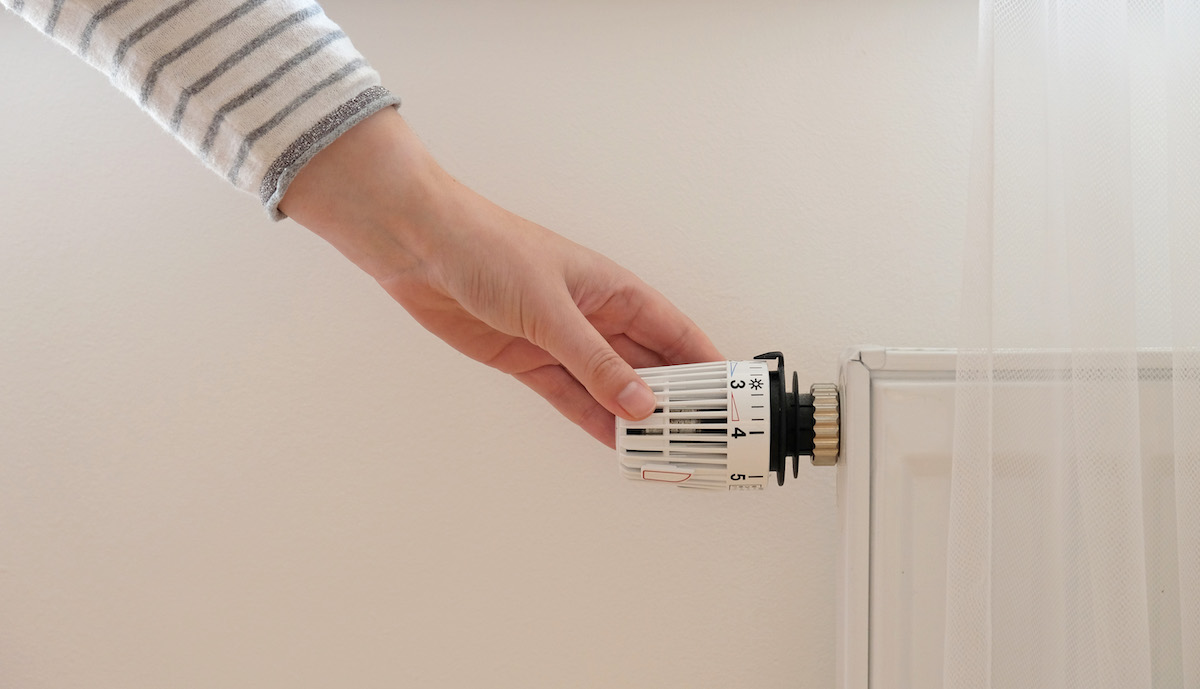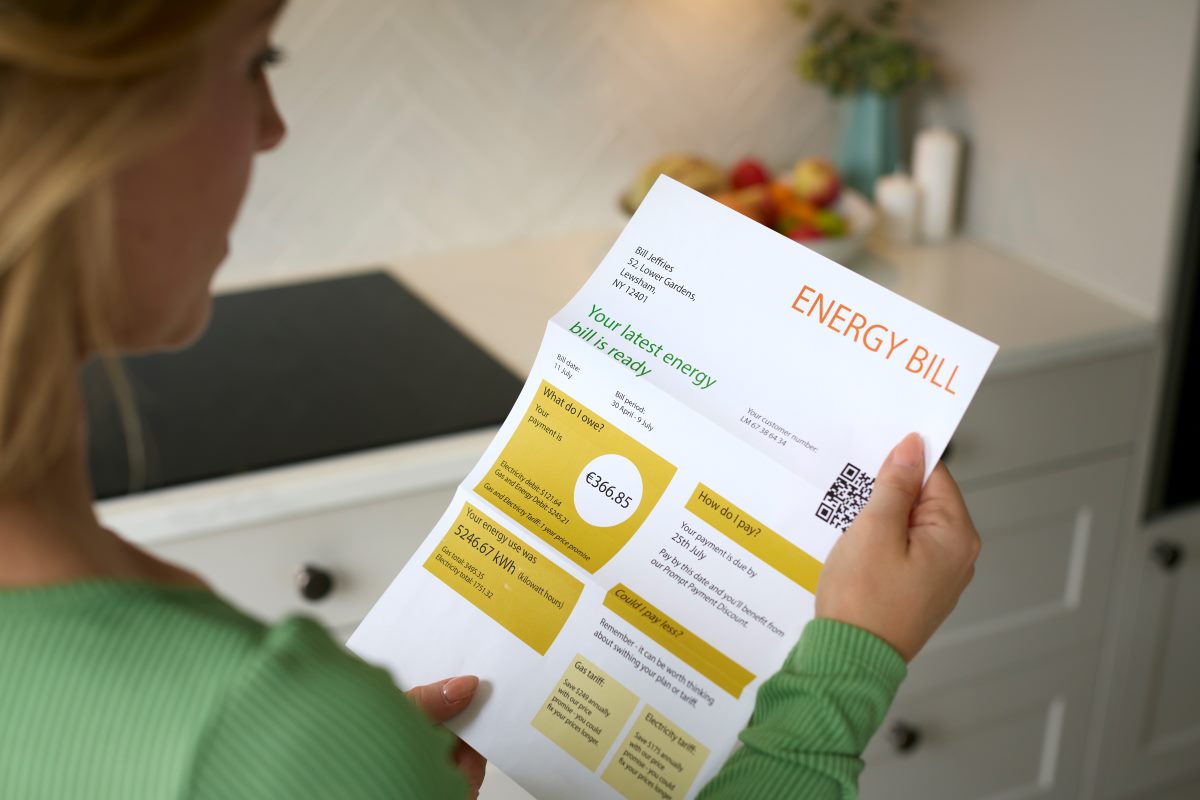Retrofitting is the process of adding new technology to an existing building to make it more energy-efficient. You can retrofit a building in various ways.
Why Should Buildings Be Retrofitted to be More Energy Efficient?
Table of contents [Show]
- Why Should Buildings Be Retrofitted to be More Energy Efficient?
-
How Can Buildings Be Retrofitted to be More Energy Efficient?
- Switch to LED Lighting
- Add or Replace Insulation
- Seal with Caulking or Spray Foam
- Install Low-Flow Showerheads and Toilets
- Install a Dishwasher
- Install Smart Thermostats
- Install a Heat Pump
- Replace Windows
- Update or Replace Inefficient Heating and Cooling Systems
- Replace the Roof with a Green Roof
- Add or Rearrange Windows for Increased Daylight
- Conclusion: Numerous Ways to Retrofit Buildings to be More Energy Efficient
Quite simply, we should retrofit buildings to be more energy-efficient as they use and waste a great deal of energy. Globally, buildings currently make up almost one-third of global carbon emissions. In Canada, 17% of emissions come from residential, commercial and institutional buildings. Unfortunately, 80% of the energy consumed in buildings globally is wasted, for example, by lights being left on and gaps in insulation.
Many nations, including Canada, have set targets of net-zero emissions by 2050. Since 65% of the buildings around in 2050 are currently in existence, most will have to be retrofitted to make them more energy-efficient and reduce the emissions linked to buildings.
How Can Buildings Be Retrofitted to be More Energy Efficient?
Switch to LED Lighting
Switching to LED lightbulbs is an effective way to retrofit a building to be more energy efficient. LED lightbulbs are highly efficient lightbulbs that consume significantly less energy than incandescent and Compact Fluorescent Lightbulbs (CFLs). This increased efficiency is because LEDs emit no heat. In contrast, CFLs and incandescent releases between 80 and 90% of their energy as heat.
While LED lightbulbs cost more upfront than CFLs and incandescent bulbs, they are the more cost-effective option. Based on two hours a day of usage, at an electricity rate of 15 cents per kWh, LEDs have an annual energy cost of $1.32, compared to $6.34 for incandescent bulbs and $1.59 for CFLs. Also, LEDs have a rated life of up to 50,000 hours, which is around 50 times longer than incandescent bulbs and 8-10 times longer than the typical CFL.
There are many different types of LED bulbs available on the market. To help you choose the correct bulbs for your needs, read our detailed article on LED lightbulbs. Also, the Energy Affordability Program, which we deliver on behalf of Save On Energy, offers free LED lightbulbs to eligible participants.
Add or Replace Insulation
Another effective way to retrofit a building to be more energy efficient is to add or replace insulation. Insulation is a material that traps warmth inside a building when it’s cold outside and decreases the amount of heat entering the building when it is warm.
Suitably insulating a building can significantly lower energy consumption. Poorly insulated buildings leak hot air in winter and cold air in summer. This leakage forces air conditioner and heating and cooling systems to be run for longer to maintain a comfortable inside temperature. Homeowners can save 15% on their heating and cooling costs by correctly insulating attics, floors, crawl spaces, and basements.
There are many different insulation types and materials available. To learn more, read our comprehensive guide to insulation. Also, our Home Insulation and Retrofit Services team can complete insulation work on your home to save you energy and make your home environment more comfortable. Visit our website to get a quote.
Seal with Caulking or Spray Foam
Another minor retrofit to increase building energy efficiency is sealing air gaps with caulking or spray foam. Air leaks allow warm air to escape in winter and cold air to escape in summer, forcing HVAC systems to work harder to maintain a comfortable temperature.
Our Home Insulation and Retrofit Services team can provide home insulation work and draft proofing to plug such leaks. Additionally, Greensaver is the delivery agent for two programs that offer such services for free to eligible customers: the Energy Affordability Program and the Home Winterproofing Program.
Install Low-Flow Showerheads and Toilets
Installing a low-flow showerhead is an easy way to retrofit a building to be more energy efficient. The average Canadian family could save 42,340 litres of water and 1180 kWh of power annually by installing a high-quality, low-flow showerhead. Such showerheads can cost as little as $8 from home hardware stores.
Thankfully, this saving doesn’t come at the expense of comfort. Studies have shown no reduction in comfort and cleanliness compared to conventional models. The Energy Affordability Program, which we deliver on behalf of Save On Energy, offers low-flow showerheads free of charge to those who qualify.
Also, upgrading to a low-flow toilet can save a significant amount of water and energy. Low-flow models use 4.8 litres of water per flush, compared to 13.3 litres per flush for older models.
Install a Dishwasher
Another minor retrofit that can be done to improve the energy efficiency of a building is adding a dishwasher. Washing dishes by hand uses up to 100 litres of water per load, compared to 23 litres of water per cycle for a conventional dishwasher.
Install Smart Thermostats
Smart thermostats are a major retrofit that you can undertake to make buildings more energy-efficient. A smart thermostat is a thermostat that you can control remotely through internet-connected devices such as phones, tablets, and smart speakers. Smart thermostats allow you to schedule and modify the temperature of your home remotely.
Smart thermostats are a significant investment upfront, costing between $250 and $350. However, they eventually pay for themselves, with smart thermostat company Nest claiming that their thermostats’ payback period is two years.
Estimates vary as to exactly how much energy a smart thermostat will save you. Nest states that, on average, their smart thermostats lower heating bills by 10-12% and cooling bills by 15% a year. Ecobee, Canada’s largest smart thermostat company, goes even further, estimating that their products save you up to 23% a year on your energy bills.
At Greensaver, we deliver two energy conservation programs that offer smart thermostats free of charge to eligible participants: the Home Winterproofing Program and the Energy Affordability Program.
Install a Heat Pump
A heat pump is a device that uses electricity to move heat from a cool space to a warm area. During warm seasons, heat pumps move heat from a building to the outside to keep a building cooler. During colder seasons, they do the opposite and transfer heat from outside into a building to heat it.
There are two main types of heat pumps: air-source and ground-source. These heat pumps collect heat from the air, water or the ground and transfer it inside a building for use. Air source heat pumps are the most common type of heat pump available.
Heat pumps are highly energy-efficient and can reduce a building’s energy consumption by up to 50% compared to electric heating such as furnaces or baseboard heaters.
Replace Windows
In traditional buildings, heat gain and loss through windows can account for 25-30% of residential heating and cooling costs. Therefore, replacing windows is another way to retrofit a building to be more energy efficient.
There are various types of windows available, depending on requirements and budget. Always speak to an expert before replacing windows in a building.
Update or Replace Inefficient Heating and Cooling Systems
Another way to retrofit a building to be more energy efficient is updating or replacing inefficient heating, ventilation and air conditioning (HVAC) systems. Having your system checked by a licensed technician to ensure optimum performance can lower your system’s energy consumption by 15%.
If, after being serviced, an HVAC system still emits loud noises and the start-up time is high, it may need to be replaced. In this case, it is best to go for an Energy Star certified model, which guarantees the highest level of energy efficiency available. Modern Energy Star air conditioners use 30-40% less energy than similar models sold 10-15 years ago.
Also, the EnerGuide label shows a product’s energy performance based on Canada’s Energy Efficiency Regulations.
Replace the Roof with a Green Roof
Adding a green roof is a significant retrofit that can be done to a building to make it more energy-efficient. A green roof is a layer of vegetation placed over a waterproof coating on top of a roof.
Green roofs make buildings more energy-efficient in two ways. Firstly, green roofs protect buildings from direct solar heat in summer, which keeps the building naturally cooler and less reliant on air conditioning. Secondly, a green roof adds extra insulation to a building, preventing heat from escaping in winter.
Installing a green roof can reduce the energy consumption of a building significantly, especially in summer. In warmer months, buildings with green roofs can see a 25% reduction in energy used for air conditioning.
Add or Rearrange Windows for Increased Daylight
Adding or rearranging windows to increase daylight is another way to retrofit a building to be more energy efficient. Ensuring adequate natural light enters a building known as daylighting can lower energy consumption by up to one-third by reducing lighting use.
Additionally, adequate natural light has numerous health benefits, including better sleep and less seasonal depression.
Conclusion: Numerous Ways to Retrofit Buildings to be More Energy Efficient
In conclusion, there are several ways that buildings can be retrofitted to be more energy efficient. Some are minor upgrades, such as installing LED lightbulbs. In contrast, others are significant retrofits, including replacing windows and adding a green roof. All retrofits discussed are vital to reduce emissions from buildings and help fight climate change.
As a reminder, our Home Insulation and Retrofit Services team can complete insulation work on your home to save you energy and make your home environment more comfortable. Visit our website to get a quote.



